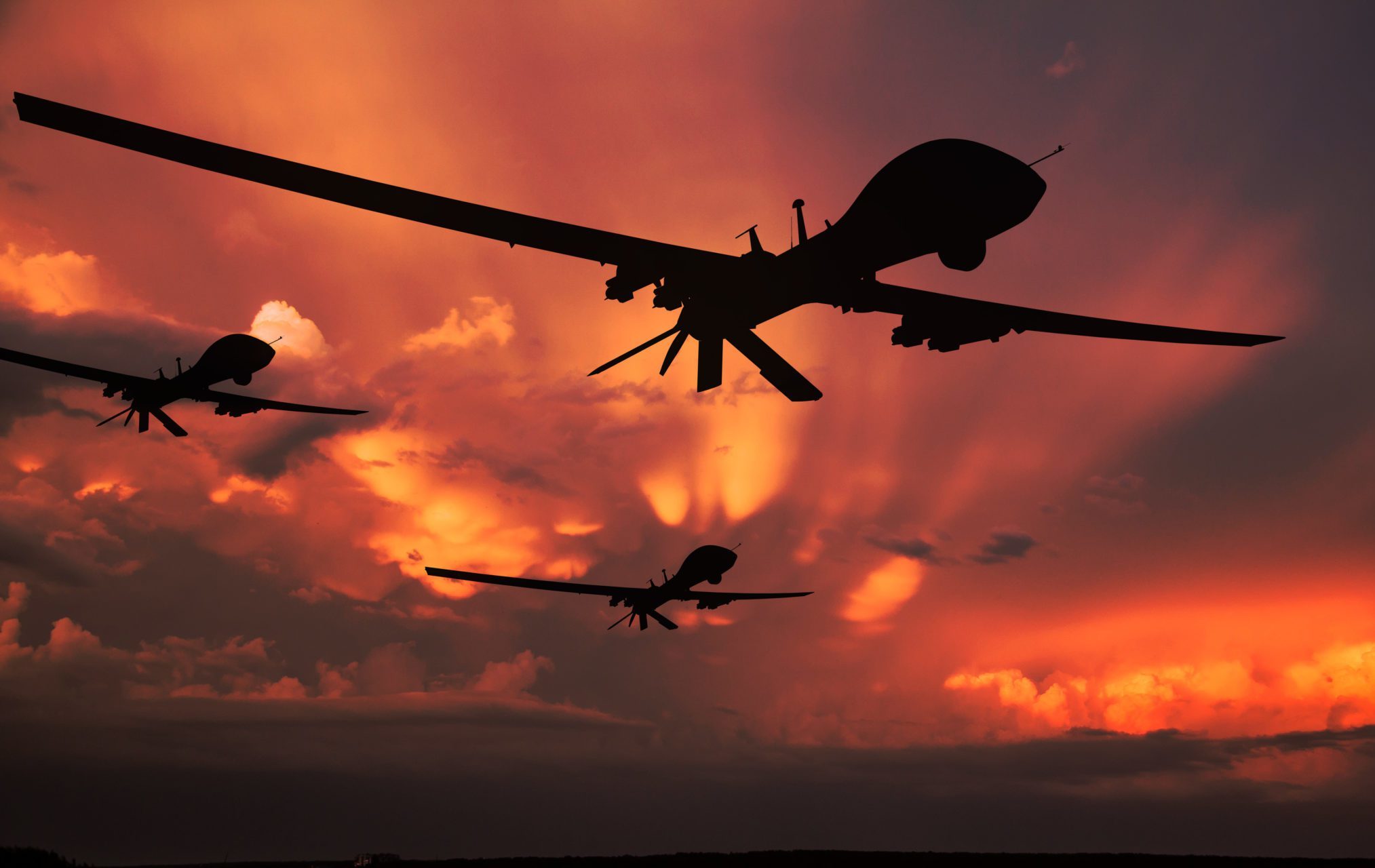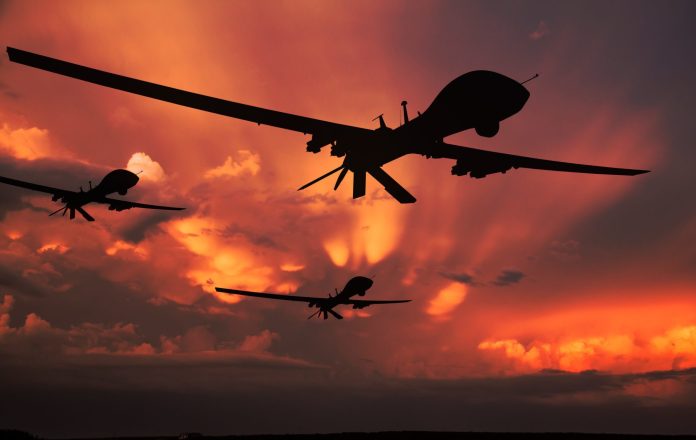
This article’s headline is not much of a challenge. Years ago, an Air Force colonel described the ideal fighter pilot to me: “Blond hair, blue eyes, square jaw, steel muscles, instant reflexes—and an IQ of 4.” Quick reactions, of both man and machine, are central to victory in air combat, and thinking slows reaction time. There were exceptions, of course. Colonel John Boyd, America’s greatest military theorist, was a fighter pilot, and Germany’s famous “Red Baron” of World War I, Manfred von Richthofen, wrote extensively and intelligently about air combat at its dawn. But for the most part, a room full of fighter pilots is a rock garden.
Some people are catching on. Elon Musk recently said the F-35 fighter/bomber, America’s first trillion-dollar weapons program, is already obsolete because drones outperform it at a far smaller cost. In rapid air-combat maneuvering, a fighter pilot can only take so many g-forces on his body; a drone faces no such limitations.
For the first time since the 14th century, when great carracks ruled the waves, Portugal is leading the world in ship design. The Portuguese navy recently ordered the world’s first purpose-built drone carrier. It looks like an aircraft carrier writ small, at about 8500 tons, but I suspect it can carry more drones than our Ford-class carriers can manned aircraft. It is projected to cost about $135 million—approximately one-hundredth as much as a U.S. Navy carrier.
When you can cut your cost to 1 percent of what you were previously paying, that should get your attention. I hope Elon is planning a trip to Lisbon.
The whole world has seen the growing impact drones have had on the war in Ukraine, where, as it happens, the million-dollar-plus American drones we sent to Ukraine proved easy targets for Russian electronic warfare while drones built in Ukrainian basements have not. So does this mean future war is a video game where soldiers are fat nerds sitting at consoles and all the fighting is drone vs. drone? It’s not quite that simple.
First of all, an automated weapon system cannot deal with situations not envisioned by its designers. AI may change that, but the human brain remains superior to any computer in creativity and imagination. History has seen many examples of high-tech weapons defeated by low-tech counters, and that is not likely to change. The Israeli military historian Martin van Creveld’s book Technology and War argues that few wars have been decided by technological superiority.
Subscribe Today
Get daily emails in your inbox
Second, you can safely bet that every major power is working on weapons that will sanitize a wide area of drones. Knocking them down individually does not solve the problems they create over land battlefields, which can be summed up as making movement difficult and thereby giving the defense superiority over the offense. But area-wide anti-drone weapons, which can range from directed energy systems through aerosols to just putting awnings over your armored vehicles to set off fuses prematurely, will be coming soon, or, in the case of awnings, are already here.
Naval and air warfare are a different story. Why? Because land warfare is carried out in a “dirty” (figuratively and literally) environment, which is to say it gives soldiers many options, while air and naval engagements occur in “clean” environments. Unless you are a submarine, it’s hard to hide on the ocean—and Portugal’s drone carrier will have drone submarines as well as aircraft. It’s even harder to hide in the air, including if you are a so-called “stealth” fighter/bomber like the F-35, because long-wave radars easily cut through stealth.
All this should be music to Elon’s ears because, if he is to cut federal spending by a couple trillion dollars, defense will have to contribute its share. The hardware budgets of the Army and Marine Corps are relatively small; for big savings, you have to take a katana to the Navy and the Air Force—in other words, to the services where substituting drones for ships and aircraft offer huge savings and where drones are likely to take over anyway. Wide-area anti-drone weapons will also be much harder to develop for the air and sea environments simply because they are so vast. President Trump’s first few weeks in office show that this time, he will bring real change. His election may go down with the election of 1932 in terms of beginning a new political era. Both Secretary of Defense Pete Hegseth and Vice President J.D. Vance fought in wars we lost, and they are committed to turning a losing military into one that wins. Elon needs to find a spare trillion dollars or more. All of these threads come together to require fundamental reforms in America’s armed forces. Today the defense budget funds four clubs for Second World War reenactors. Why?


